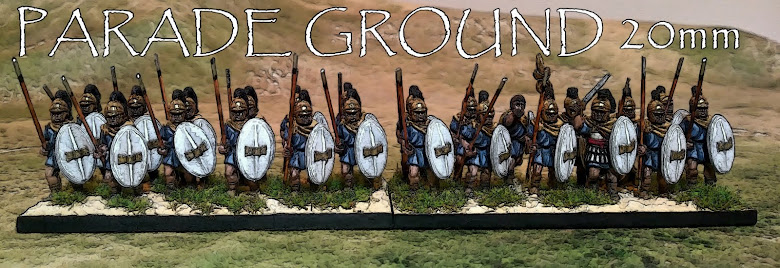Painting guide for
African heavy infantry.
GW = Games Workshop Citadel Colour, VJ = Vallejo.
1. Undercoat with GW Foundation Flesh.
2. Linothorax with GW Foundation Stone.
3. Tunic, crests, cloaks with VJ Red.
4. Straps, scabards, spear, in GW Dark Brown.
5. Metal, helmet, greaves, armour, spearbutt with VJ Brass.
6. Sandles with light brown, hair with black/brown.

7. Whole figure GW Brown Mud Wash.
8. Highlight Skin with GW Foundation Flesh except face, use GW Elf Flesh.
9. Highlight linothorax with GW Foundation Stone.
10. Highlight tunic, crests, cloaks with VJ Red.
11. Highlight straps with GW Vermin Brown, scabards, spear with GW Snakebite Leather.
12. Highlight metal helmet, greaves, armour with VJ Old Gold.
13. Speartip, swords with GW Chainmail.

Shields:
1. Undercoat with VJ Light Blue.
2. Wash Front with GW Blue Wash.
3. Paint alongside of spine with GW Ice Blue.
4. Highlight VJ Light Blue.
5. Paint Shield Boss GW Boltgun Metal.
6. Highlight shield boss GW Mithril Silver.
7. Apply transfers.
8. Highlight VJ Red if neccessary.
9. VJ Matt Varnish shield.






















